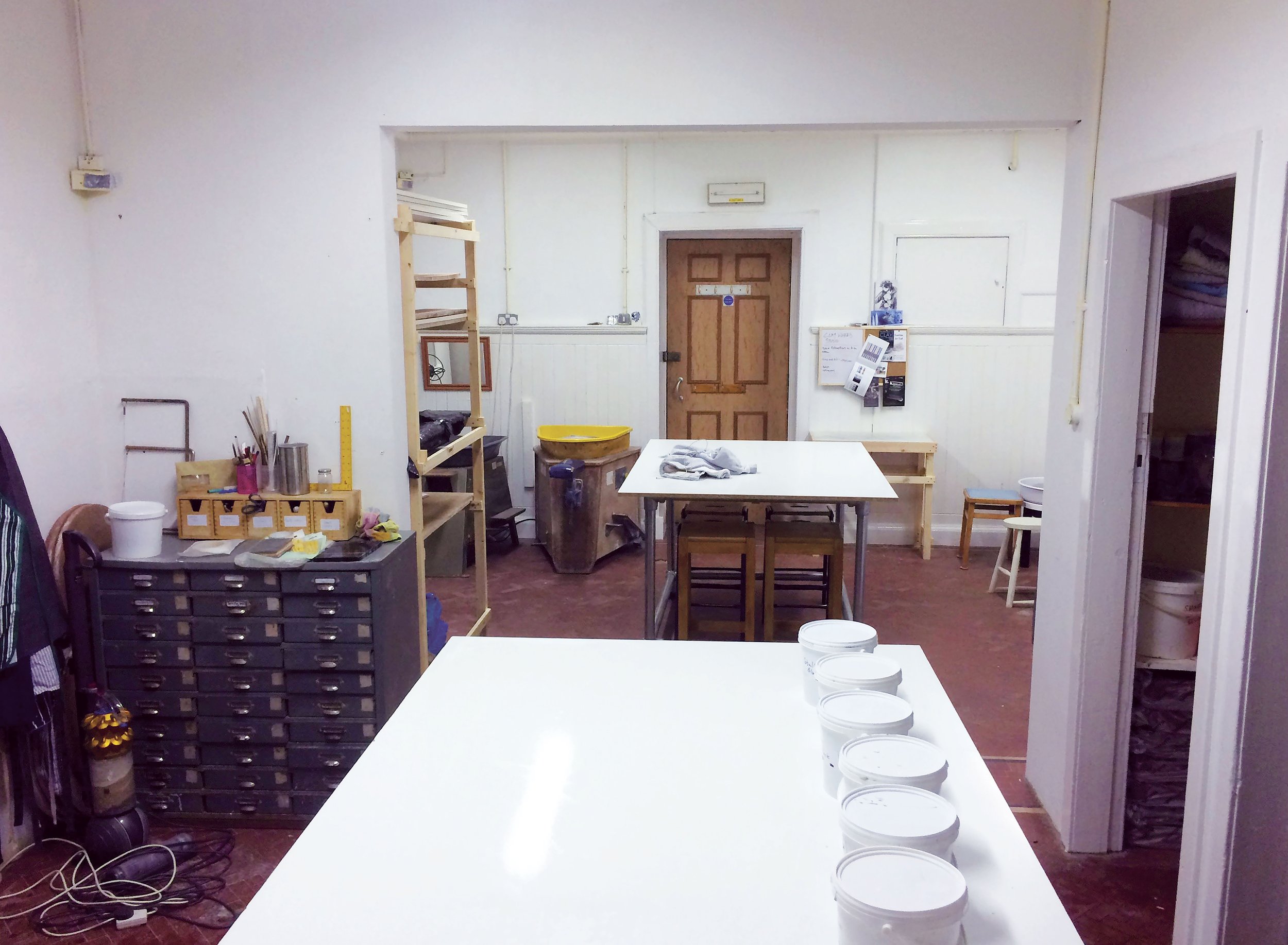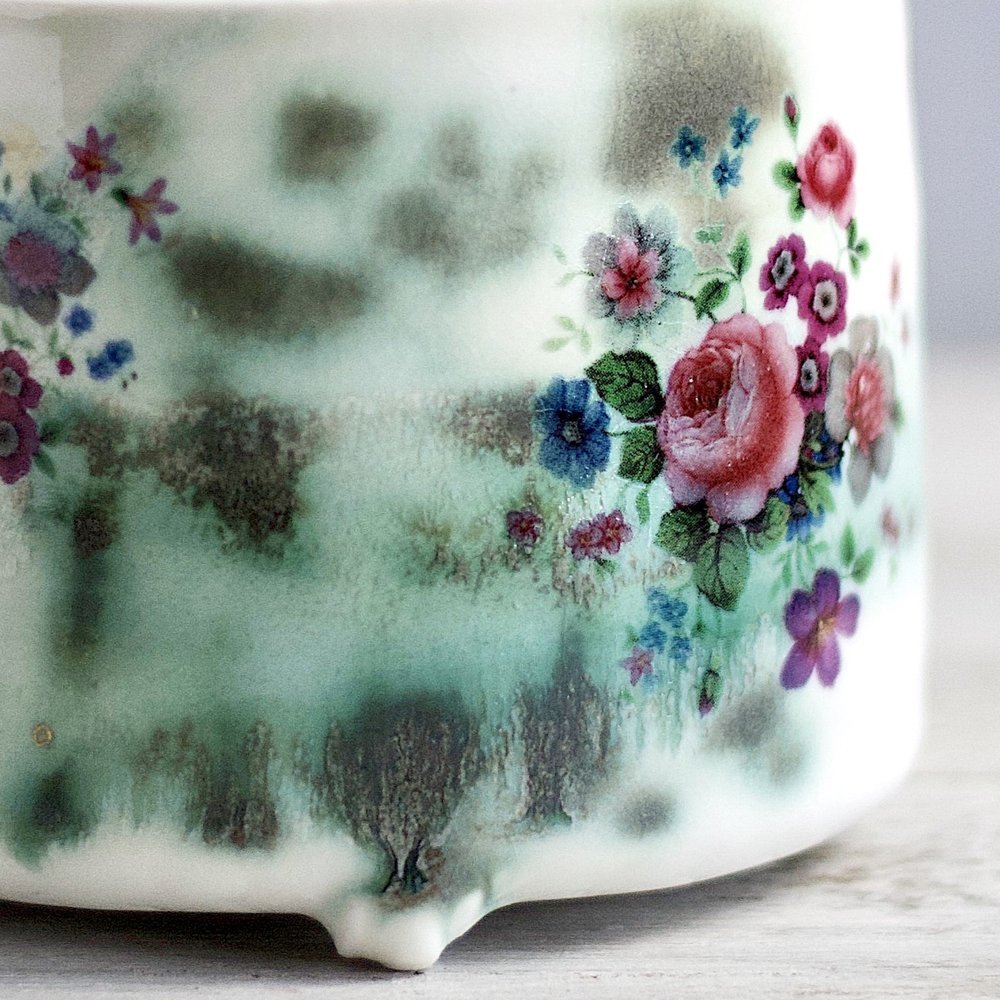Clay Crafts Article 2: Short
SETTING UP CLAY WORKS POTTERY STUDIO IN DUMFRIES.
When we decided to move to Scotland and set up the pottery studio in 2017, it wasn't a rash decision by any means but one that we considered over the course of around six months.
At that time, we began to create a plan for the studio, making several trips north to look for suitable premises and talking things through with various people to see if there was any interest in our ideas.
When weighing up our options, we had hoped to buy a house with an outbuilding we could convert to a studio, but it quickly became apparent that our finances would not stretch that far. So we decided if we had to rent a space, it would be best to do this in Dumfries to make the studio as accessible as possible to people in the region.
A vacant workshop space within The Crichton Estate, about a mile south of the town centre, seemed a good fit.
The estate (once the grandest of Scotland's Royal Asylums) was built in the mid-1800s, and when I first visited Dumfries in 2003, some of the buildings within the 85-acre site were still used as a hospital.
The wards closed in 2013, and the estate is now run by a trust which aims to preserve the buildings whilst developing the site to keep it relevant to the needs of the local community.
With acres of well-kept gardens, green spaces, numerous businesses, cafes, a spa and a hotel all within the many grade 1 listed buildings, it really is a beautiful environment we work in, and I think many of our course participants have enjoyed it too.
At the time of our move, we had one small Cromartie kiln that didn't like going to stoneware, so we needed to find a decent kiln quickly. We had an amount of money set aside for equipment to furnish the pottery studio, so whilst I asked around in an analogue way, Lauren went online and, through social media, found a large 3-phase Rhode top loader on the Isle of Mull. The couple who owned it had it in storage and needed the space, so they were willing to give it away if someone was prepared to collect it!
Finding this kiln was a real stroke of luck and meant that most of the money we put aside for equipment we could now spend on four new wheels to add to the two old workhorses we already had.
We had agreed to rent a space which consisted of two work rooms with three smaller store spaces attached. As we had only ever needed a fraction of this kind of space for ourselves in the past, seeing it empty, we felt that this would be more than adequate.
We spent about two months fitting it out, building two large, sturdy tables from scaffolding and plywood, along with a wire rack and damp cupboard to help store the work.
Now, with all the furniture in place, it was not looking quite as big as it had. Once we opened our pottery classes, we realised the size and layout of the space would limit the class sizes considerably, so a year later, when a larger space became available to rent, we decided to move.
The new space was open plan (making it much more flexible), benefitted from natural light, and doubled the size.
Generally speaking, it was a much nicer space, and we knew we could easily accommodate larger groups of people within it.
So we closed for a month to move and effectively had to start the build again - not totally from scratch, but as much of the shelving and other furniture had been made to fit the space, they had to be resized and refitted. The full process probably took another six months, and with this happening alongside our continuing teaching commitments, there was little time left for anything else.
INTRODUCING GRAYS CERAMICS
With the studio refit completed, we could turn our attention to making things. This aspect of our business is varied, and I plan to outline other elements of this in time, but for now, I would like to talk about the work Lauren produces under the name Grays Ceramics.
When we started the pottery studio, we intended to pool our skills and work collectively on making projects.
Back in the early noughties, Lauren and I had met through our apprenticeship experience at Dartington Pottery, and we both agreed that this was invaluable in terms of our professional development.
With Clay Works Studio, we wanted to create opportunities for people across a range of levels of abilities and interests, from those who would come for a social experience to those who wish to become professional potters and for the latter, we thought it would be great to offer something similar to an apprenticeship.
We started to put this philosophy into practice during the studio's early days, and in the first two years, although we were not producing much, we had several people come to work here for short periods. Some were students, and some were further along their professional journeys; one of them, Abbie La Rooy, originally a student from Goldsmiths who visited us back in 2018, returned after completing her studies in 2021 and now works part-time with us, helping to run the pottery studio, teach classes and work together with Lauren and me as part of our production team.
Initially, when working collectively on manufacturing projects, the work produced between us was sold under the name Grays Ceramics as we wanted it to stand apart from Clay Works, however with most of the work in the first year made under this name being designed and produced by Lauren (with a little assistance from Abbie and I), Grays has naturally become associated exclusively with her.
Since 2019, she has developed several collections of work for a range of different clients. Mugs for a local hotel, soap dishes for a soap maker and in 2020, the London Dog Grooming Company commissioned her to make a range of exclusive dog bowls to sell through Liberty of London.
In addition to this commission work, Lauren has also been developing her own range of functional pieces, making use of our collective knowledge of surface decoration.
The pieces are thrown using porcelain to give a white, smooth, translucent canvas on which to decorate. Whilst still raw, they are impressed using stamps made from copper wire, underglaze printed, bisque fired, then glazed using a combination of glazes - some brushed, some dipped - to give additional variation in surface quality. Fired again to 1260, decals are then applied before a final firing to fuse them to the glaze.
The copper wire stamps, underglaze print and decals have all been designed and made by Lauren and are derived from drawings of local wildflowers found while walking in Dumfries and Galloway.
Lauren currently makes a range of pieces using this process in our pottery studio in Dumfries, which can be found on her website: www.graysceramics.com



